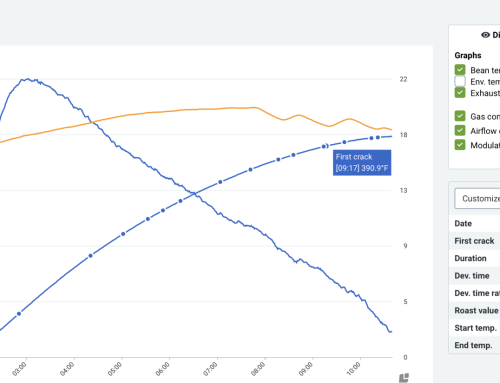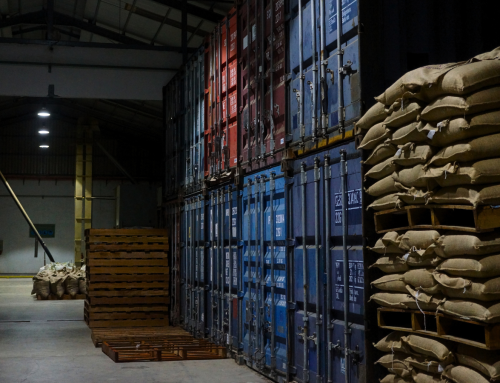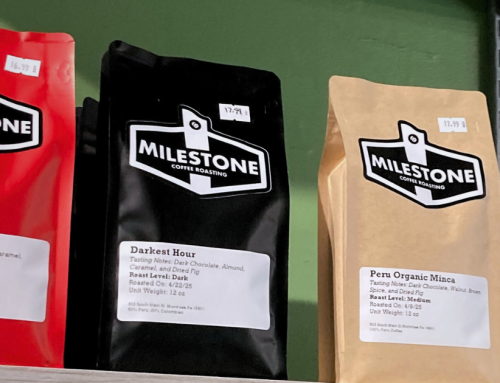Wholesale coffee roasting. For many coffee-roasting businesses and coffee roasters, it’s the plan, the goal, and the key to success in a single phrase. A strong roaster and a few good wholesale clients can catapult a roastery into high speed growth, lower costs through bulk purchasing and increased sales.
Genuine Origin works with many small to mid-size coffee roasting businesses. Some are just starting out on their wholesale journey or on their way to market dominance. This post contains some of the nuggets we’ve taken away throughout years of helping coffee businesses build robust wholesale coffee programs.
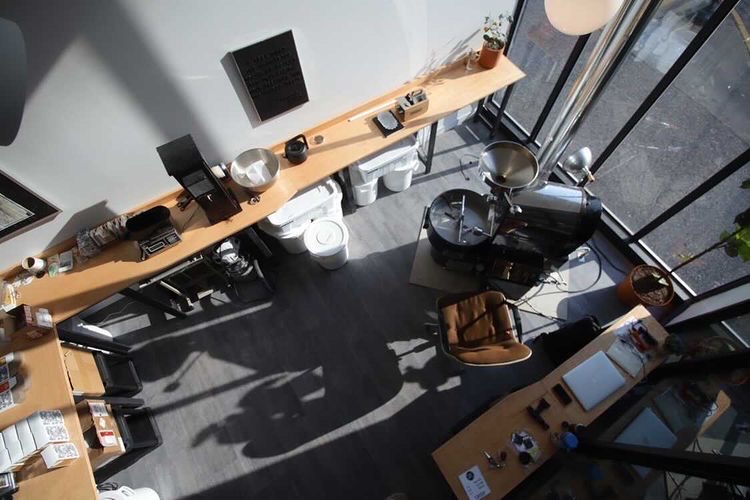
Swed & Co Coffee Roastery
The Wholesale Coffee Roasting Business Plan
It always starts with an idea. But what turns a creativity is just one part of the equation. When developing a business plan, Jay Vernaleken, Genuine Origin’s East Coast Sales Manager, has a few questions that should be top of mind:
- What are your goals? Where do you see the company in three years, five years, or 10 years?
- Who is your target market? Are there any outsider markets that haven’t been tapped into?
The answers to these questions will heavily influence the next step in building your initial coffee portfolio. “Before you start buying coffee, make sure you know your brand, core values, mission statement, and target market,” adds Jen Hurd, Genuine Origin’s West Coast Sales Manager.
For example, suppose your target customers are beverage bars in hospital canteens. In that case, your portfolio may need to incorporate coffee options like decaf or organic options. “Offer a mix of blends and single origin coffees, but don’t go overboard,” says Jay. In the early stages, it’s even more important to have a clear picture of how much it will cost to produce a bag of coffee.
- Familiarize yourself with how green coffee pricing works because this will be the bulk of your inventory. Don’t forget to factor in manpower, packaging, and equipment costs, plus a marketing budget.
- Set a bottom line for pricing and gross profit margin. It’s also a good idea to clearly lay out bulk discount pricing from the beginning instead of offering and accommodating different discount rates for different clients.
Once you’ve run the numbers, it’s time to figure out how you plan on receiving payment from your customers. For retail roasters, a simple website with credit card payment processing might work. But for larger B2B wholesale coffee transactions, most commercial clients prefer company invoices and payment accounts. Will you offer longer payment terms or late penalties? These are key questions you’ll have to answer before you roll out your offer.
Make sure your accounting and invoice system is set up…and, hopefully, automated. When the time comes to settle with the taxman or chase down late payments, you’ll be glad you did.
Now that you have a plan, a purpose, and an ideal coffee portfolio, you can get to the fun part: stocking up on green coffee and roastery equipment. This might be a good time to brush up on sourcing specialty green coffee before diving into an operational roastery.
Starting Simple – Get Your Roastery Running
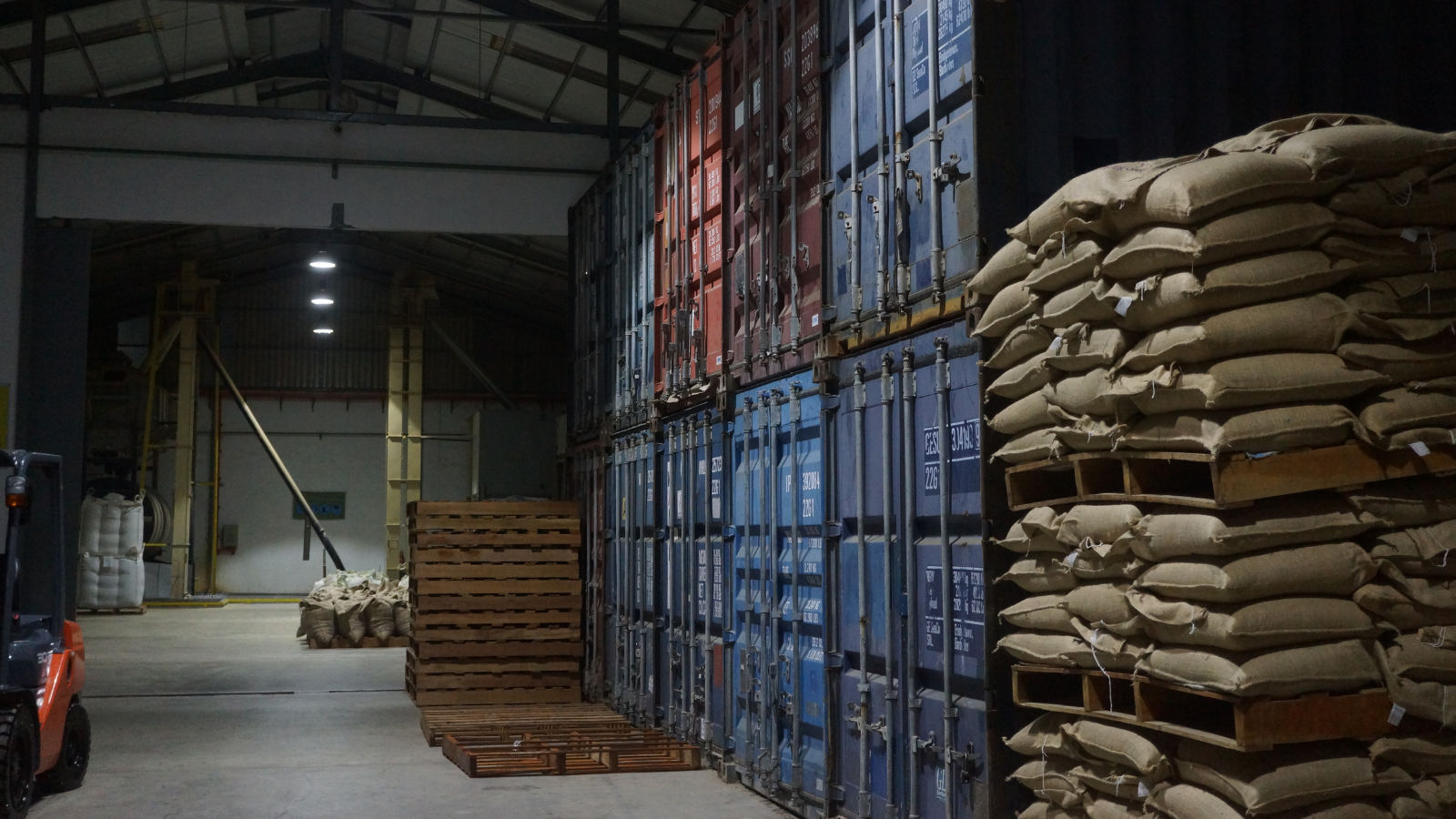
PNG green coffee warehouse
It’s day one on your brand-new roasting floor; what’s up first on your production schedule? “Make sure you’re organized and ready to scale,” says Jen. “Set specific days for roasting, production, delivery, shipping, etc., so that you can easily adjust. If you do local delivery, make sure that your time and money are well worth it and if shipping is more efficient, give it a shot!”
A repetitive production calendar also helps with consistent inventory rotation. Roasters of all sizes like to take advantage of Genuine Origin’s on-demand accessibility and price transparency when buying green coffee. Our expertise is getting you the green coffee you want when you want it. Shipping is always free within the continental US, with no minimum order, and you can easily factor in quantity discounts on three, five, 10, or 24 mixed-and-matched boxes of coffee.
Once you get a pattern going, you can start buying green coffee forward with green coffee suppliers like Genuine Origin and have a steady stream of inventory for your incoming orders. Buying green coffee forward not only locks in specific coffees that you want to keep offering in your portfolio for the next few months but also frees up your cash flow. With Genuine Origin, you don’t pay for forward orders until the coffee ships from our warehouse.
The operation of a wholesale coffee roasting business doesn’t just take place on the roasting floor – some clients may rely on you to provide on-site consultation and troubleshooting when they dial in your coffee. “Some restaurants and cafés are going to expect equipment on loan,” says Jen. “Make sure to ask clients about this.”
Part of taking your customer service (and potentially your revenue) to the next level is to support your clients on all their needs. “If you don’t want to get into equipment yet, are there local coffee equipment companies you can work with or refer?” asks Jen. In addition, you can improve your reputation by being part of a strong network of like-minded suppliers that share your business values and expertise.
Rob Sulkow, Genuine Origin’s Director of Marketing, advises coffee businesses to take a page out of the playbooks of great brands. “They try to do things differently. You don’t have to be different in every way, but be different, grow into your position, and defend it,” he says. “Be selective with your coffees; introduce your community to new coffees through cuppings and new esoteric offerings that complement your delicious daily roasts. From a micro level, you might be the only specialty coffee roaster in your local community.”
Build Relationships and Add Value

Red, ripe coffees cherries harvested in Brazil
A robust coffee wholesale program doesn’t just stop at roasting and delivering great coffee. Depending on your unique situation, you may want to explore other revenue streams, expand your market, or build more robust brand recognition within your community.
There is always room to adjust your business strategy, but keep in mind – cheapest does not equal best! “Just because you’re trying to get into a new account doesn’t mean you should have the cheapest price around. Make sure your margins are covered and that your price conveys the value that you and your coffee bring to these wholesale accounts,” says Jen.
Big accounts like supermarket chains are very attractive for a growing roastery, but before you approach a buyer, take a moment to reevaluate your product positioning. “Grocery stores can be really competitive. Make sure you’ve got packaging that will stand out and clearly show your brand,” says Jen. “Ask grocery buyers about buy-back policies, receiving hours, and product demos.”
While drumming up new business, don’t forget to check in with your current customers and keep them engaged. “Take a customer focus – if brand choices did not matter, everything would be a commodity (and we would have a very drab world),” says Rob. “By focusing your brand on your customer or the customer you wish to attract, you give them a reason to look at you and think about you differently.”
Rob’s tip is to conduct user surveys but keep them simple with existing tools like comment cards, SurveyMonkey, or Google Forms. “Many businesses conduct market research before even thinking about selling a product. The best way to know what your customers want is to ask and listen.”
The coffee industry is constantly changing, and your customers will appreciate full transparency. Keep them in the loop when things change, particularly when coffee prices go up or shipping is delayed, so they can also plan their businesses accordingly.
“Building a wholesale program takes time,” says Jay, “nothing happens overnight. Be patient, figure out what works and what doesn’t, then build off from your mistakes.” Genuine Origin isn’t only here to connect you with great coffee but to also help you build your coffee roasting business. Stock up on specialty green coffee inventory with the portfolio on our website, get in touch with a sales manager like Cyndi, Jay or Jen to work out green coffee solutions or check out more resources for coffee roasting businesses on our blog.

